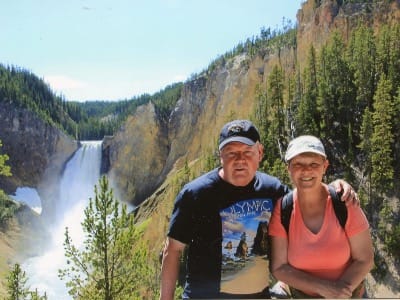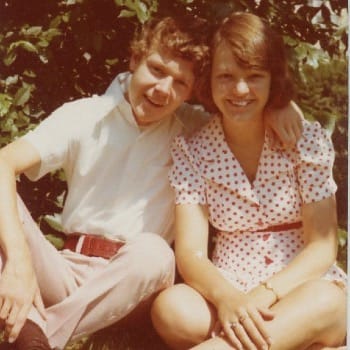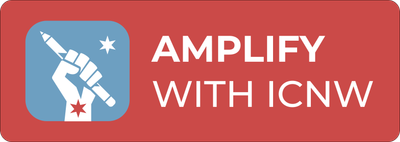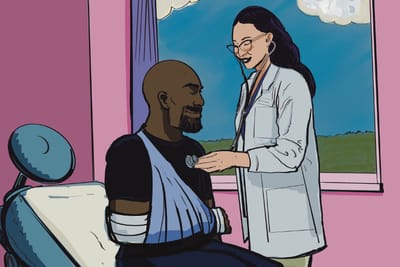Cutting a Lifeline

If anyone had asked her five years ago if she knew someone on Medicaid, my neighbor Susan Zimny would have said no. She assumed that Medicaid was only for people with disabilities or those experiencing poverty. She never thought she’d have a family member who relies on the program—let alone two family members.
“You never know when you or someone you love will need it … at any age,” Susan says when sharing the stories of her brother and her son with me in my bungalow on the Northwest Side. My dog adores her, so I know she’s good people. She has lived in Portage Park for more than 30 years and has raised her family here.
The future is terrifying for many like Susan and their loved ones because of the One Big Beautiful Bill’s cuts to Medicaid. An estimated 12 million Americans will lose their healthcare coverage in 2026, according to the Congressional Budget Office. Worry runs deep about costs and the care they will receive from an already overstretched healthcare system.
How does a person end up on Medicaid?
Despite misconceptions, the majority of people on Medicaid are hardworking; they simply need extra support to cover health care costs. In some instances, their life truly depends upon it. More than 60% of Medicaid recipients have jobs, according to the Kaiser Family Foundation, a nonpartisan health policy organization.
Other recipients are dealing with disabilities–either physical, mental or addiction-related–but many have conditions that are not officially recognized as disabilities. Gaining that designation isn’t simple.
State Rep. Lindsey LaPointe, who represents the 19th District, is a passionate advocate for public health, especially disabilities and mental health. “The process of earning the disabled designation is long and arduous,” she explains. “So it raises the issue of how to afford health care while undergoing a process that can take many months.”
Now, changes to Medicaid could make qualifying even more difficult, making our most vulnerable neighbors even more vulnerable.
Michael’s Medicaid story

Growing up, Michael was the big brother who protected Susan and helped her with her homework. He was in his late 60s, living his best life as a semi-retired historic architectural preservationist in Florida. Seemingly in an instant, everything changed a few years ago. Michael experienced a brain bleed and was soon diagnosed with Parkinson’s and early-stage dementia.
Now it was Susan’s turn to look after Michael. She moved him back to Chicago for the full-time care he now needs. Before the diagnosis, he had been living on Social Security and a small pension. But that was not nearly enough to cover his care in a skilled-nursing facility. So like many people, he relies on a combination of Medicare and Medicaid.

Susan’s biggest fear is the impact the cuts will have on the quality of care Michael receives and which expenses will still be covered. She tells me that Michael’s caregivers have been wonderful, but they are overextended. She wonders if the facility will have to cut staff or the types of care he receives. She would do anything for her brother, she says, but the financial concern is very real.
Susan was asked by the Be a Hero Action Fund to share Michael’s story. “I wanted to let people know that decisions which are made very far away can have painful consequences to people living very close to you,” she says. Watch below:
Ryan’s Medicaid story
Susan’s son Ryan is in graduate school full-time pursuing a degree in educational psychology. She says he’s a very compassionate person and believes his work will help young people in the future. He’s young and healthy, but once he turned 26, he aged out of the family’s health insurance plan. An insurance broker told him he’d likely be eligible for Medicaid. He has a couple of years left in his studies, likely including a year-long unpaid internship in a school. He needs this health insurance bridge until he starts his career.
The One Big Beautiful Bill is instating a work requirement for those deemed “able-bodied” that will go into effect by December 2026. The requirement will affect single adults ages 19 to 64 with no kids.
Susan’s son falls into this group, and it’s uncertain if the Republicans’ new Medicaid rules will make him have to choose between going to graduate school or having health insurance. He tried to work as a barista while attending school, but couldn’t juggle the required hours with his graduate school workload. Once he’s placed in a full-time school apprenticeship, a second job that meets the Medicaid work requirement will be impossible. Susan wonders where that will leave him when he can’t afford private insurance.
Many people are in this same limbo…too young for Medicare, but too old to be covered by his family. Working hard—but in school, to become a more skilled and productive member of society. Without Medicaid, how can he afford health care? What happens if he gets sick or is in an accident? Susan can’t bear the thought.
Where does the money from Medicaid cuts go?
The new laws aim to slash Medicaid over the next 10 years to help pay for tax cuts for the wealthy and to fund an enhanced immigration crackdown and detention facilities. Meanwhile, our neighbors like Susan’s loved ones face potentially life-and-death challenges at the mercy of these sweeping cuts.
There is nothing “big” or “beautiful” about that.
COMING SOON: A story on how our neighbors are helping ease the blow of Medicaid Cuts
Local Resources & Ways to Support
If this story spoke to you, please share with a friend and subscribe to Amplify.
Want to be a helper? Need help? Explore our lists of resources and volunteer opportunities by topic.
Come back soon for more information specific to Medicaid resources!
Subscribe to our newsletter.
Be the first to know - subscribe today



